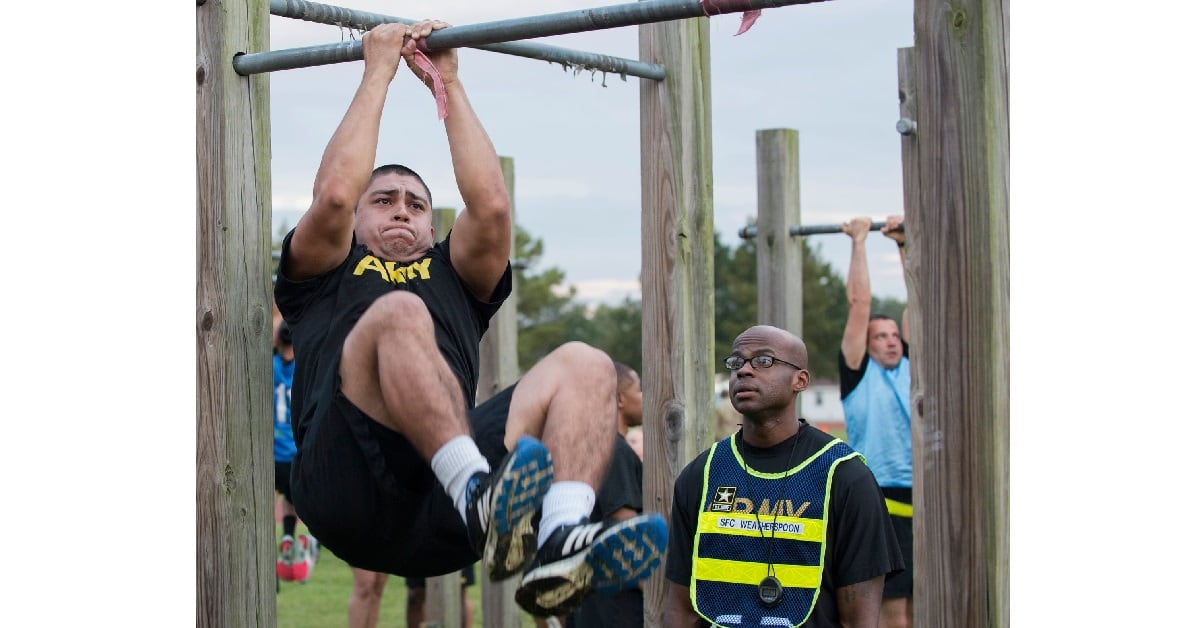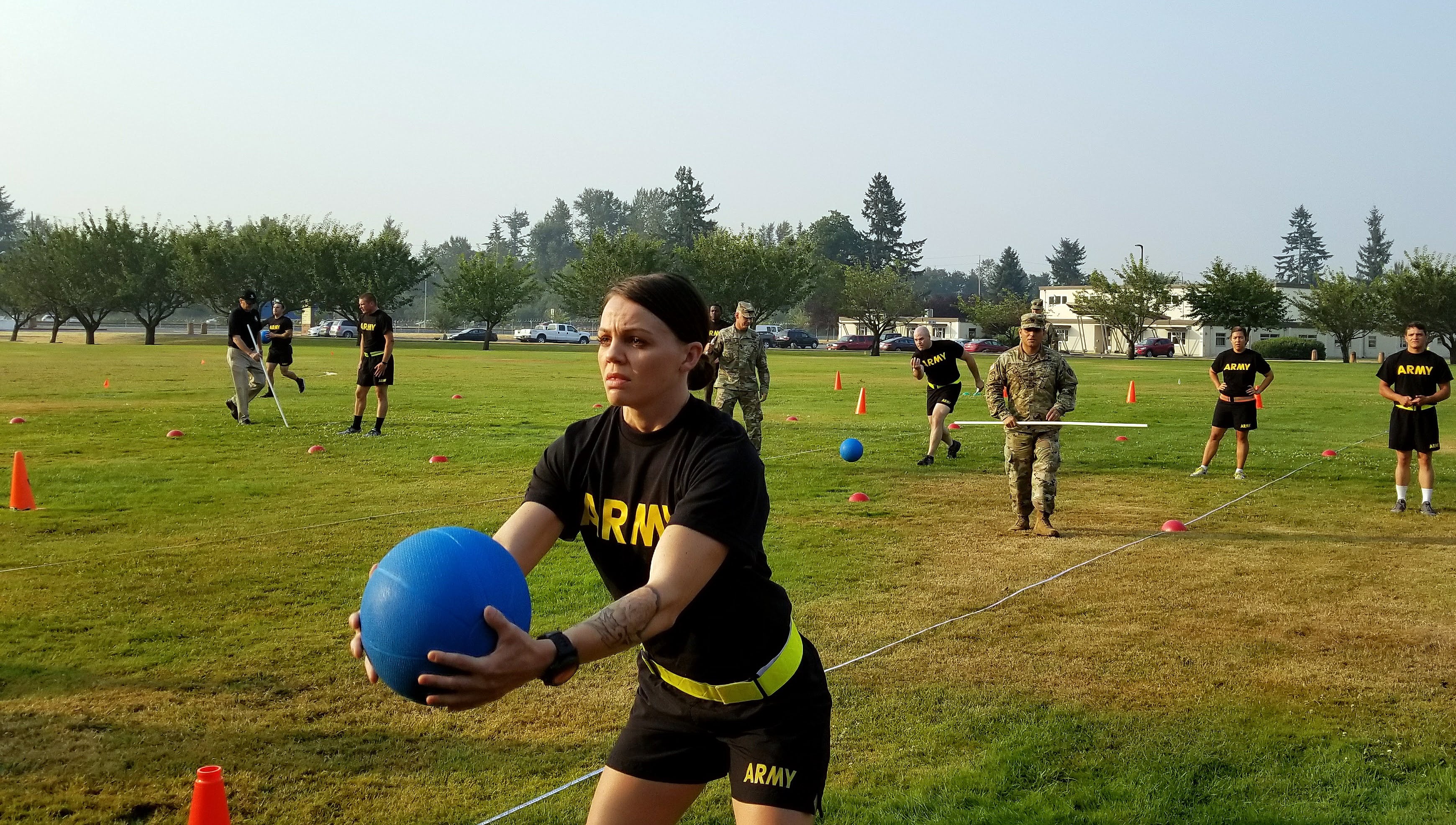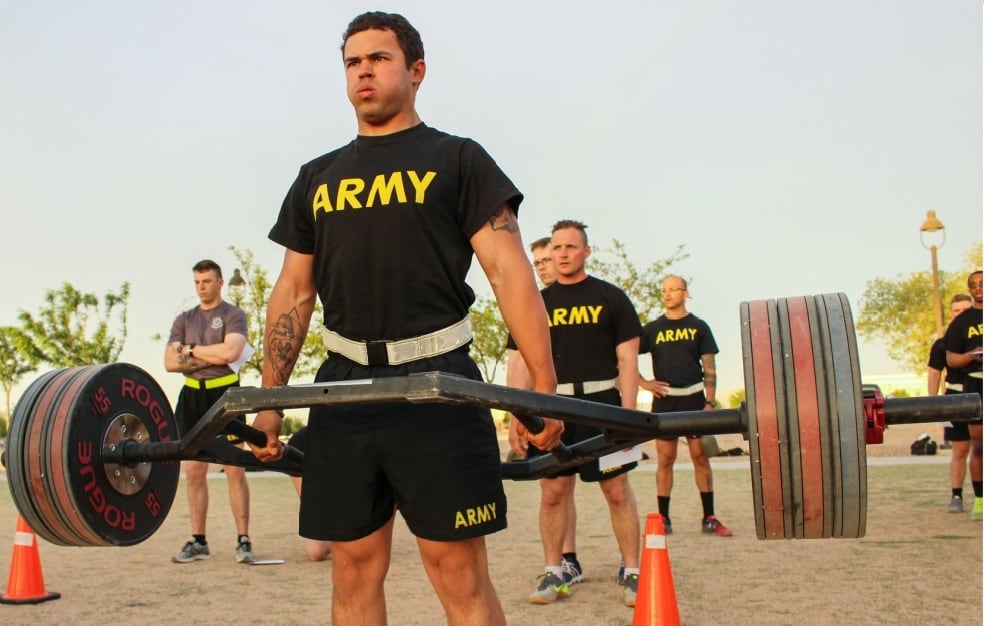Is the Army Combat Fitness Test the right direction for our Army, or is there a better, safer, less expensive option?
Several studies show we have a generation of recruits whose activity level is “too low to even maintain health and physical fitness," and unfit recruits are significantly more likely to be injured and discharged early compared with healthy peers.
Furthermore, in combat, the number one reason for soldier evacuation is musculoskeletal disorders (24 percent), which far surpasses the second reason, combat injuries (14 percent).
The ACFT events unnecessarily introduce musculoskeletal injury risks to our troops. More injuries increase profiles, putting a strain on units and, ultimately, the Department of Veterans Affairs.
Whether we want to admit it or not, many units will train for the ACFT, so the test should be designed with that in mind.
To get the best fitness test, there needs to be a blend of the ultimate lab test with what is practical in the field.
The current Army Physical Fitness Test, with changes to focus on total body fitness, achieves that balance.
As an added benefit, the modified APFT is notably more cost-effective in both the short- and long-term than the ACFT, will provide a more significant predictor of success for soldiers than the current APFT, and will incur markedly fewer injuries than the proposed ACFT.
Four ideas behind the APFT
1. Easy administration. The APFT can be performed almost anywhere, anytime, with minimal cost, minimal equipment, minimal administrator training, and minimal administrators, whether in garrison or deployed. To lose this ability will be a disservice to everyone.
2. Easy results interpretation. The first sergeant can quickly understand an APFT score, determine areas where a soldier needs improvement, and then tailor training. One reason the APFT has fallen out of favor is it is only a 40 percent predictor of soldier success, while the ACFT provides an 80 percent prediction.
3. Exercise suitability. APFT exercises are safe for all ages and sexes. Whether one is 20 or 40, the degenerative effects of age do not put the soldier at higher risk for an injury like many ACFT exercises.
4. Cost. The APFT requires minimal equipment and transportation costs. Soldier injuries while in the service and VA disability claims after service are also minimal.

What’s wrong with the AFCT?
1. Advanced exercises. Many of the ACFT exercises are advanced exercises, whereas recruits need to start with more basic exercises to prevent injury. Difficult-to-perform ACFT exercises with weak or obese recruits equals increased injuries. Therefore, most recruits can’t safely train-up for the ACFT on their own before attending basic training due to their lack of knowledge and physical conditioning.
2. Leg tuck. The leg tuck unnecessarily introduces a high risk for injury, requires standardized equipment, can’t safely be performed outside in cold or wet weather, and should not be performed by people who are overweight, have weak grip strength or weak core strength.
3. Hand release push-up. These type of push-up puts extreme strain on shoulder joints and the rotator cuff due to the combination of quick pressure changes and may lead to a significant rise in shoulder injuries.
4. Deadlift. The deadlift performed improperly with heavy weights can lead to long-term lower back injuries, knee injuries, hernias and wrist injuries.
5. Standing power throw. The standing power throw becomes increasingly dangerous based on the age of the user. As bodies mature in the 30’s and upward, the power throw movements increase the risk of spinal and lower back injuries, especially in people who are not in peak shape.
6. Administration. The ACFT is not easy to administer in garrison or deployed environments. Heavy equipment requires storage and delivery, some equipment requires installation, and the test is weather restricted for outdoor use. Multiple administrators requiring significant training are necessary. Medical personnel should be on standby due to the substantial risk of severe injuries while performing ACFT exercises.
7. Equipment cost. Multiple ACFT kits must be purchased per unit and installed at great expense. A single lane kit exceeds $3,000. Additionally, equipment will incur significant shipping costs for deploying units. Furthermore, how do soldiers at remote locations, recruiting stations and the like prepare for the ACFT without equipment?

APFT adjustment and training program
1. Adjust the APFT to test the same categories of the ACFT: muscular endurance, muscular strength, explosive power, speed agility and cardio endurance.
2. Due to the recruit pool obesity, lack of fitness, and need to start at the level of fitness where each recruit/soldier is at, it is critical to design a simple, training program anyone can follow anywhere. The trick is to incorporate a training program based on timed sets to build total body fitness initially with bodyweight exercises and then with equipment Soldiers already possess.
Modified APFT events
1. Push-ups. Maintain and continue to use a point scale. To make the event more strenuous, start in the prone position. Count repetitions after the body returns to the start position or use a four-count push-up with the grader counting one through three and the test taker voicing the fourth count.
2. Sit-ups. Maintain and continue to use a point scale. If the Army decides to replace sit-ups, replace them with the crunch exercise and use a point scale.
3. Two-mile run. Maintain and continue to use a point scale.
4. One- or two-mile power walk with 25- to 35-pound ruck, with or without body armor. Use a point scale for time. No running.
5. Five 50-yard sprints with 30-second rest intervals. Use point scale or pass/fail time hacks. Or a 60-yard shuttle Run event at 5-, 10- and 15-yard intervals. At each point, runner uses hand to touch the ground. Use points scale or pass/fail time hacks.
6. Power clean and jerk using a 25- to 35-pound ruck, with or without body armor for 10 to 15 reps. Power clean and jerk incorporates all around body strength. Use points scale or pass/fail.
In conclusion, while there is no perfect fitness test, the modified APFT will save the government millions in the short-term, billions in the long-term, be safer to take and train for, will better prepare soldiers for their jobs, and can be performed in garrison or deployed environments.
Additionally, by incorporating an individualized program, recruits can get in shape safely at their own pace before basic training, and soldiers will be able to stay in shape in all environments.
Yes, our Army can get physically fit in a better, safer, and less expensive manner — meeting the goals of the ACFT but without the risk.

Lee Kind is a doctoral student at Regent University and a former Army captain with service in the 82nd Airborne Division and the 2nd Infantry Division, with deployments to Iraq and Kosovo. Kind is also the best-selling author of “MAX Out the Army, Navy, Marine, and Air Force Physical Fitness and Combat Fitness Tests” and other military leadership books. Reach Kind at atw82d@yahoo.com.





